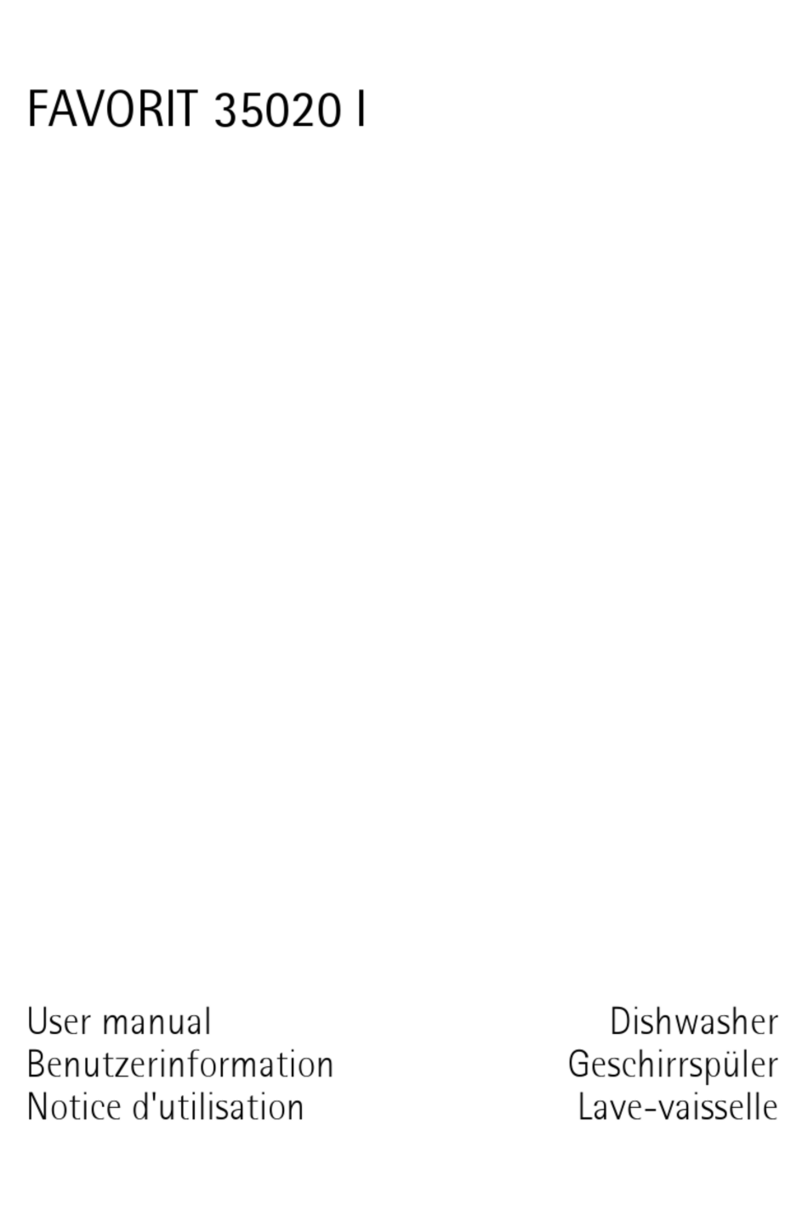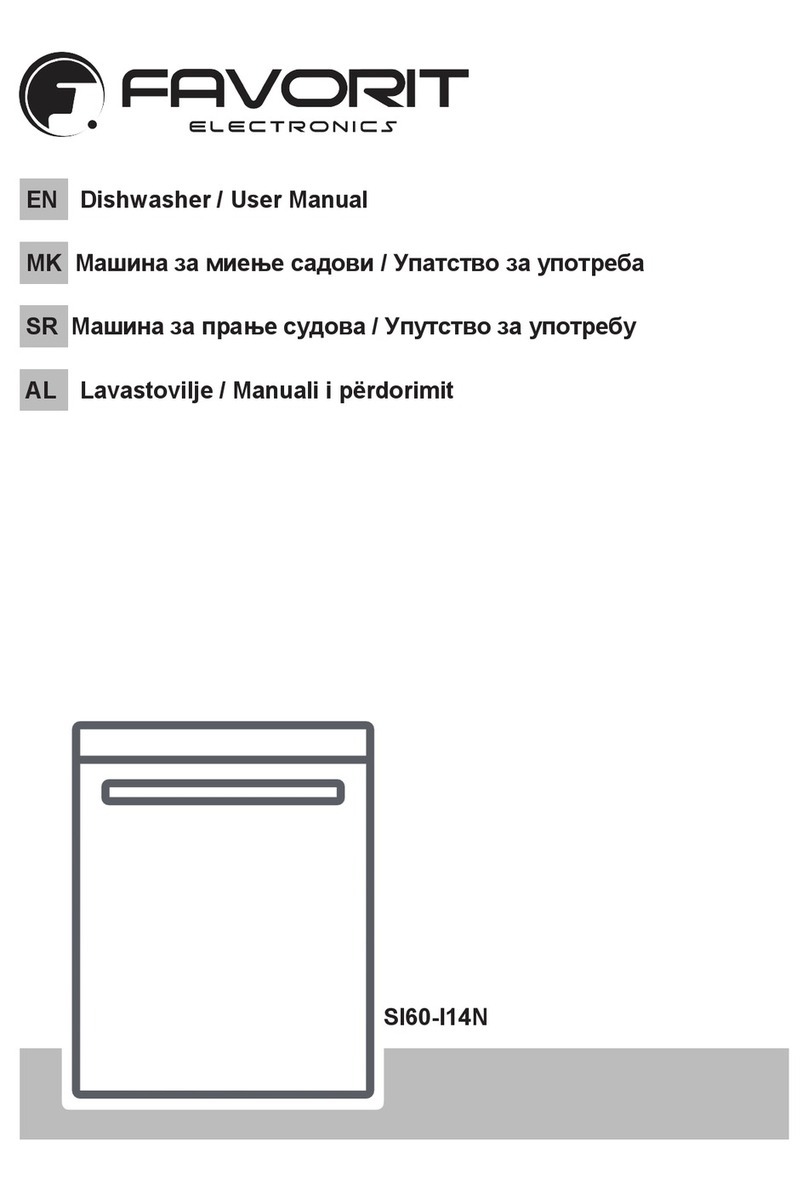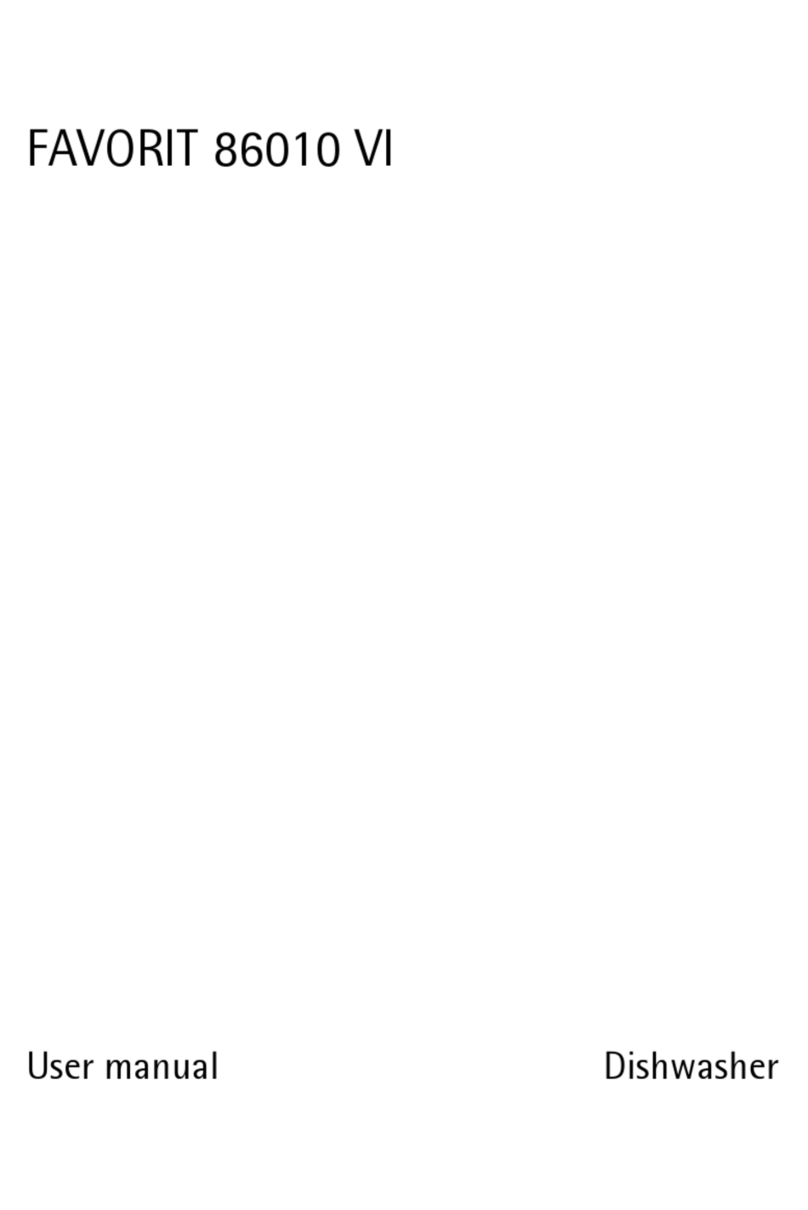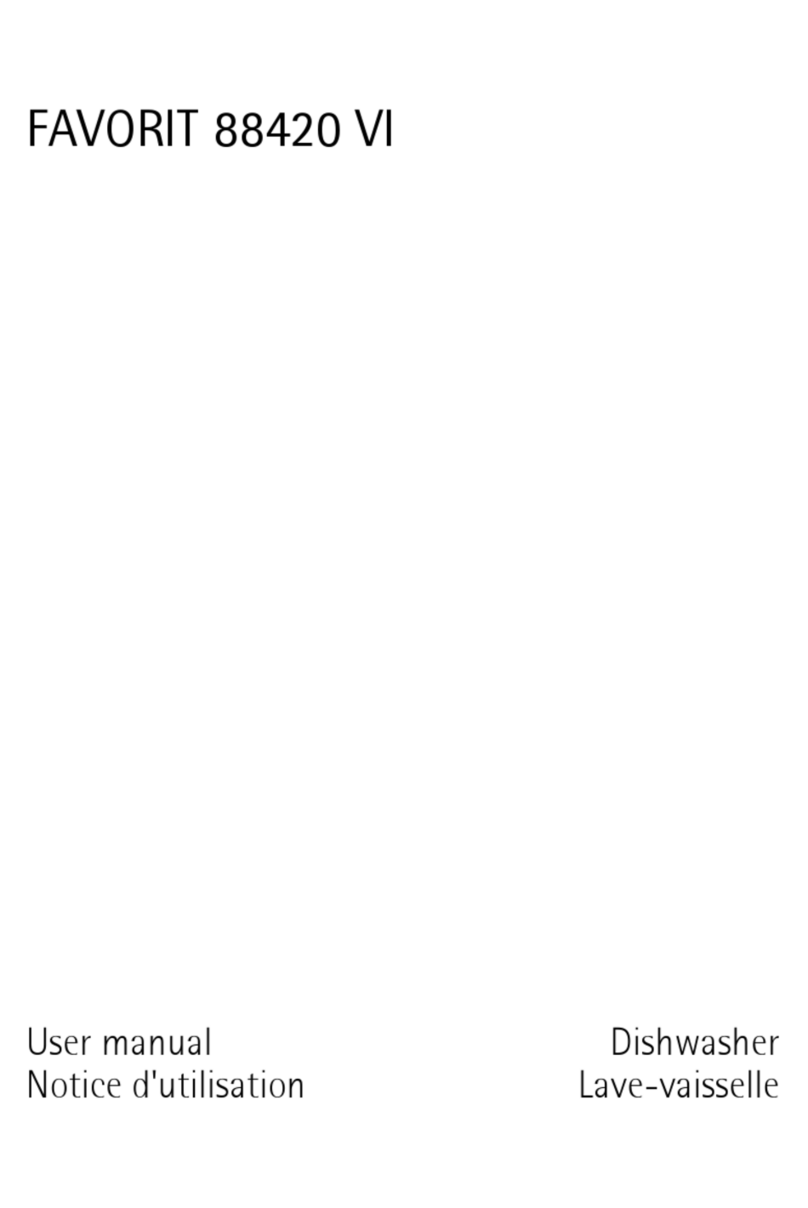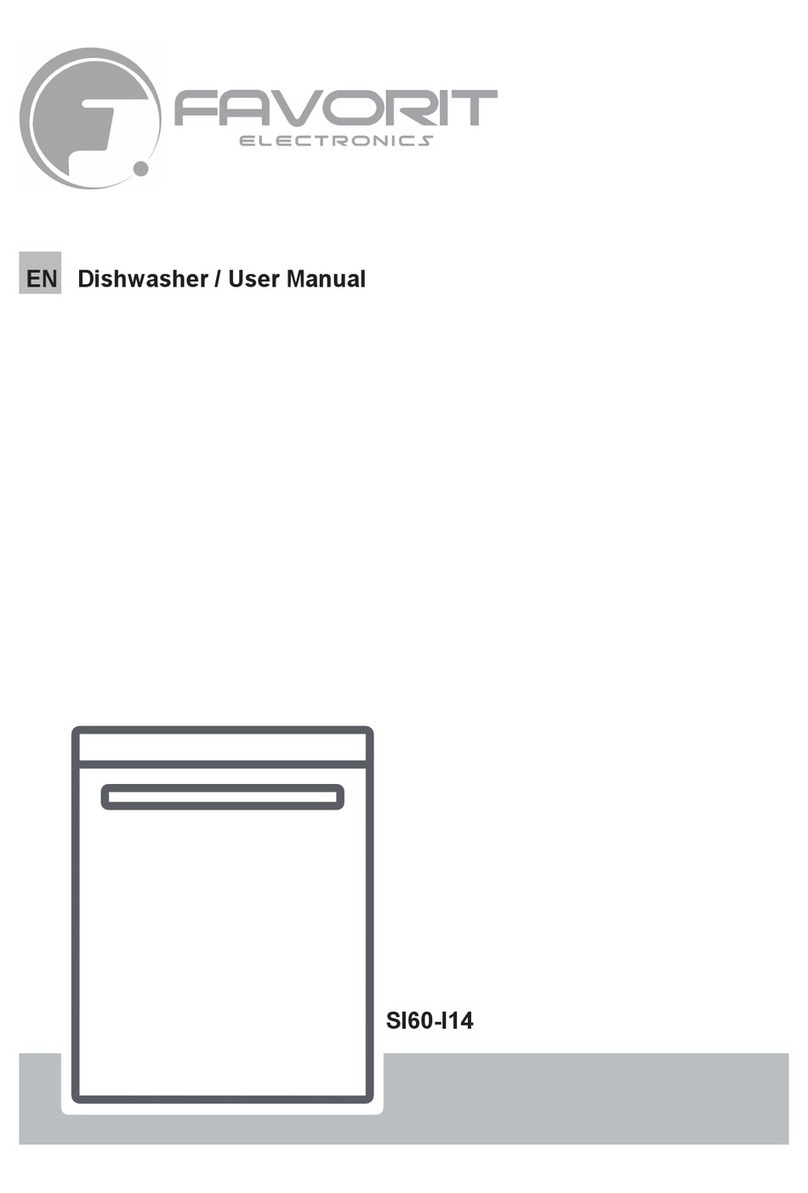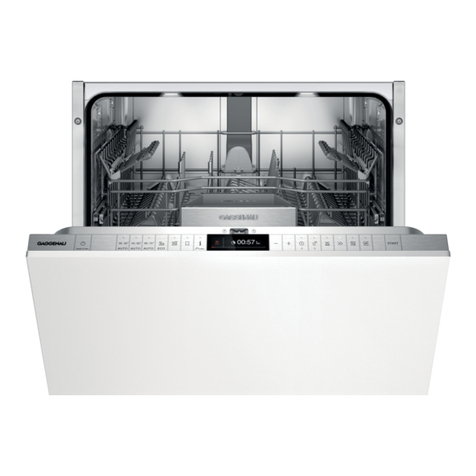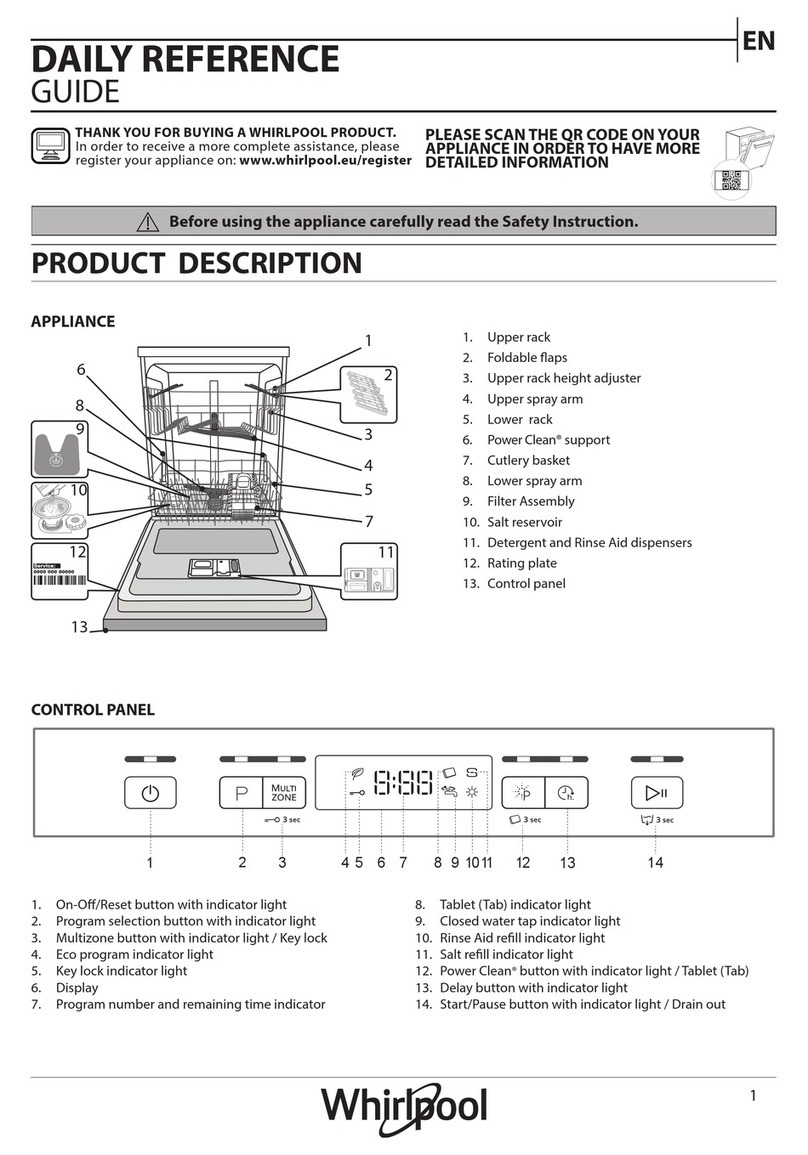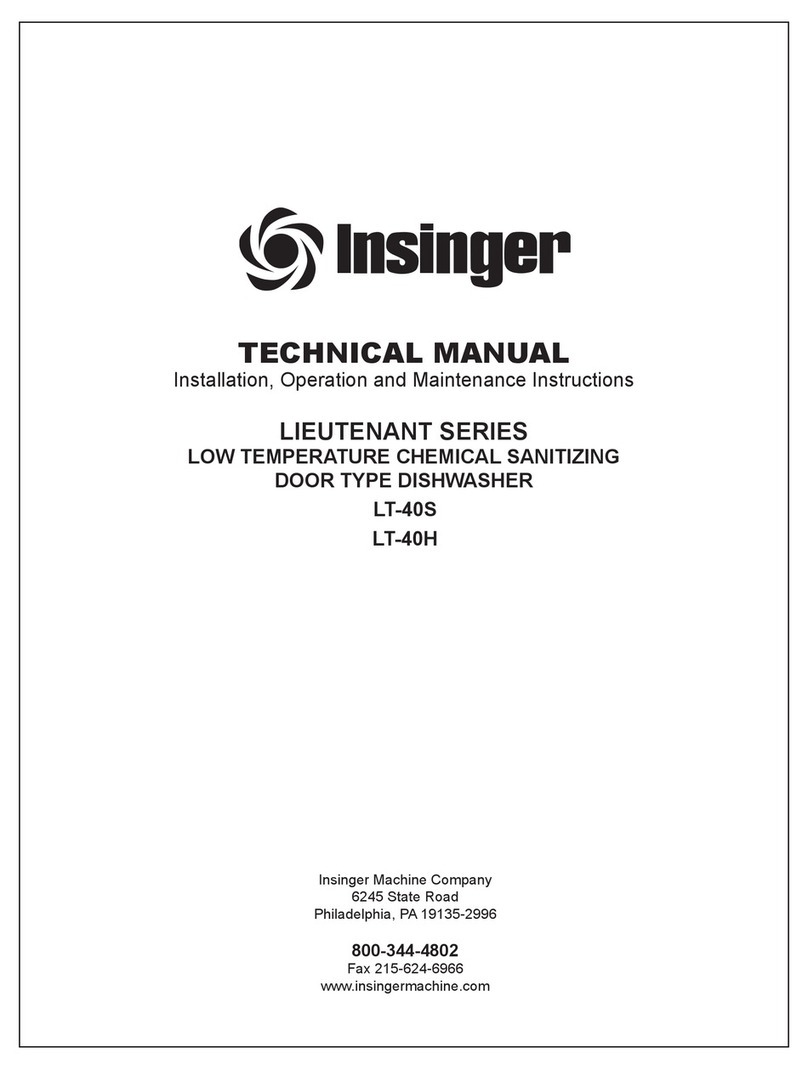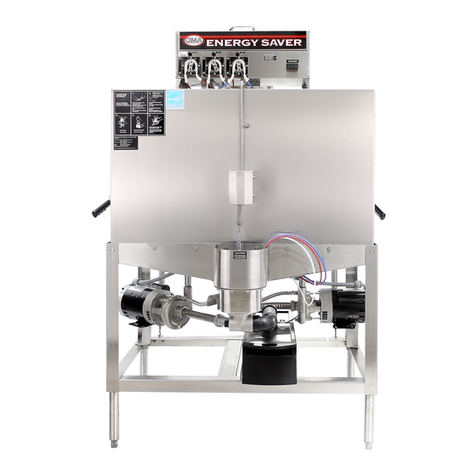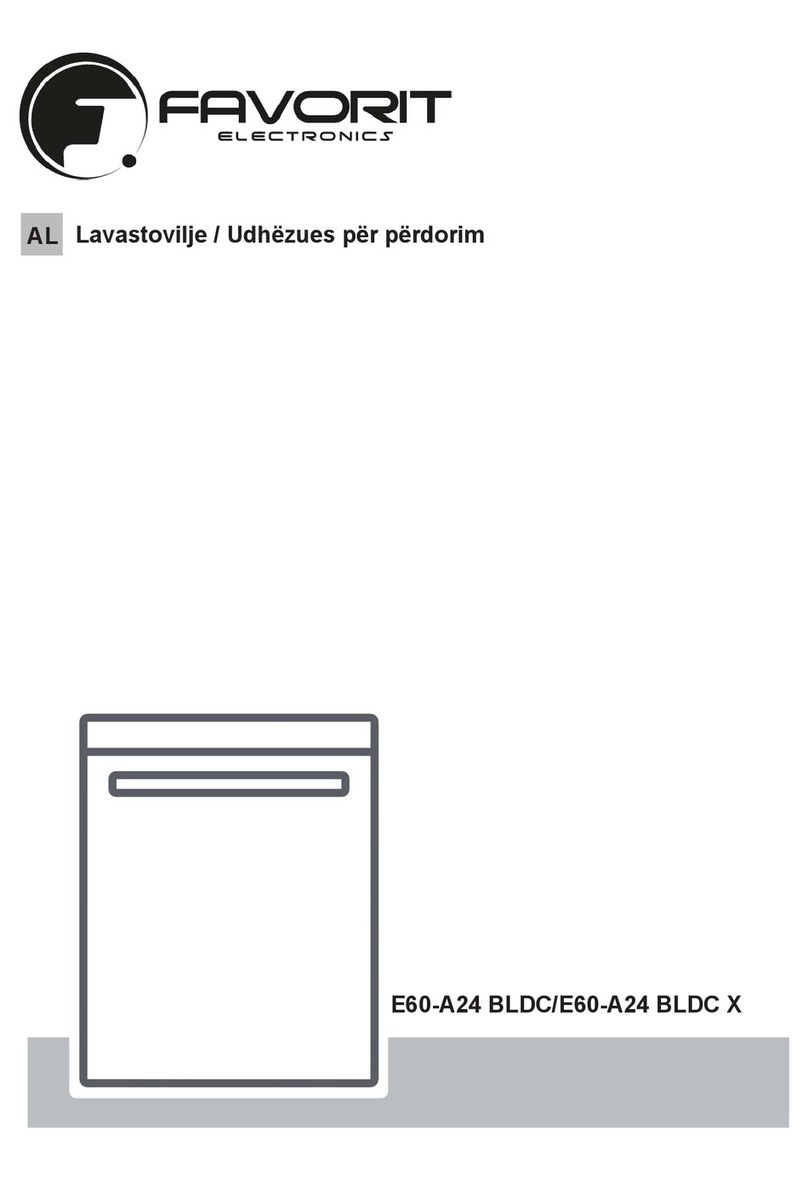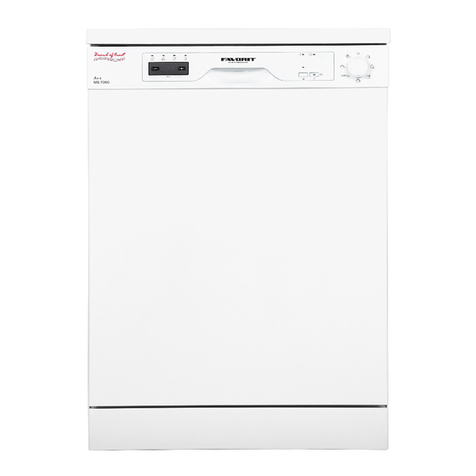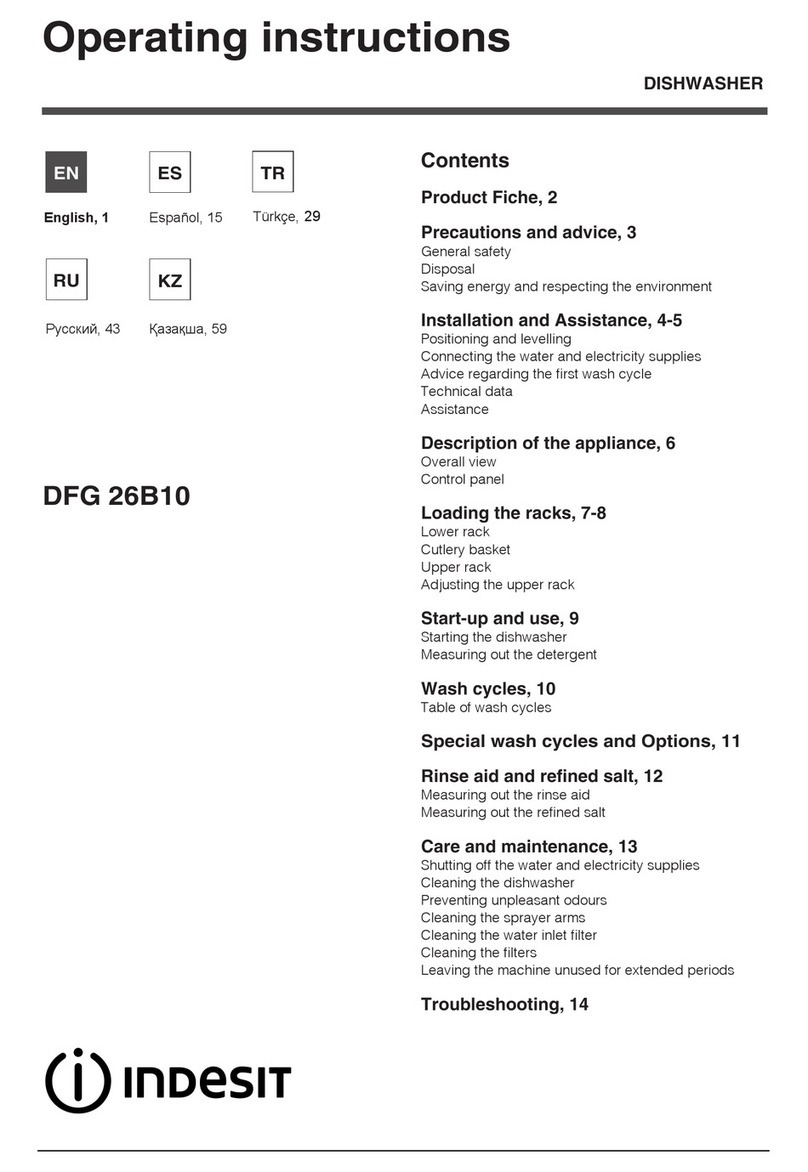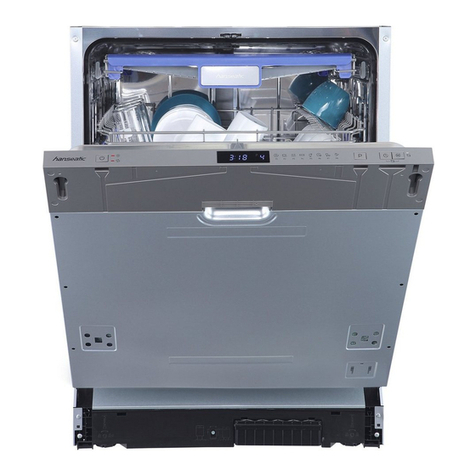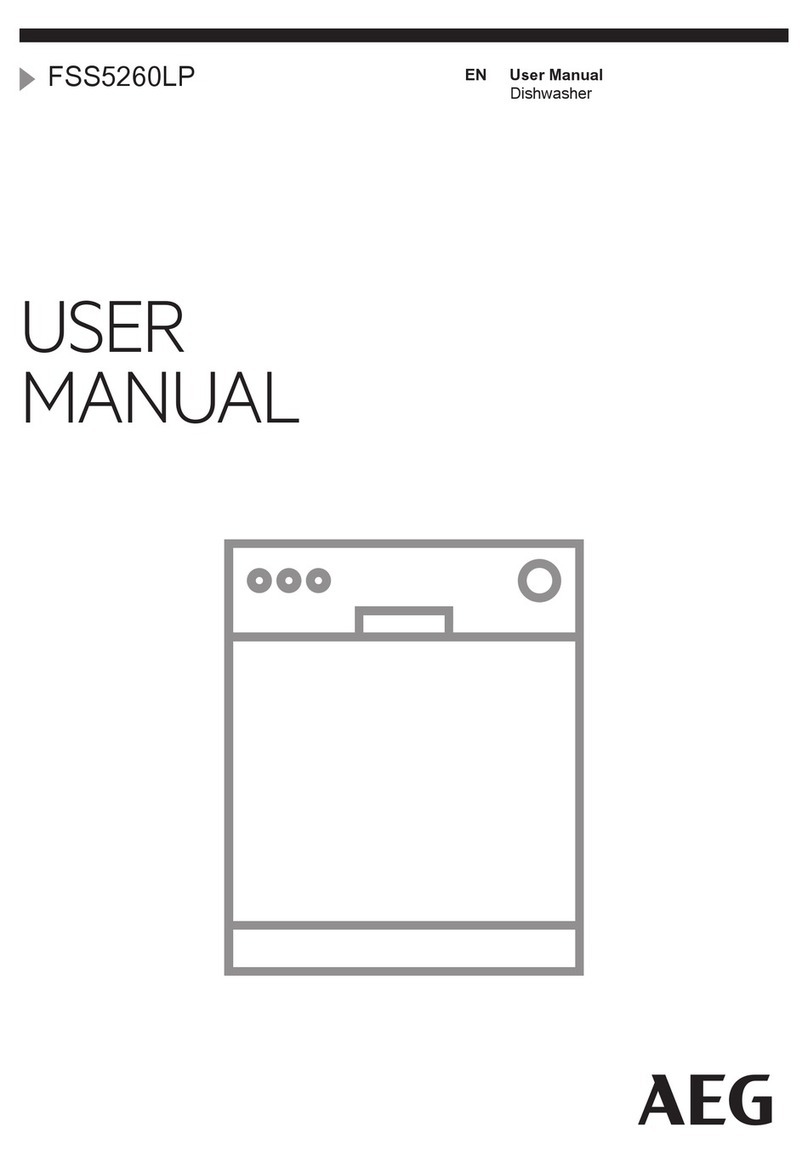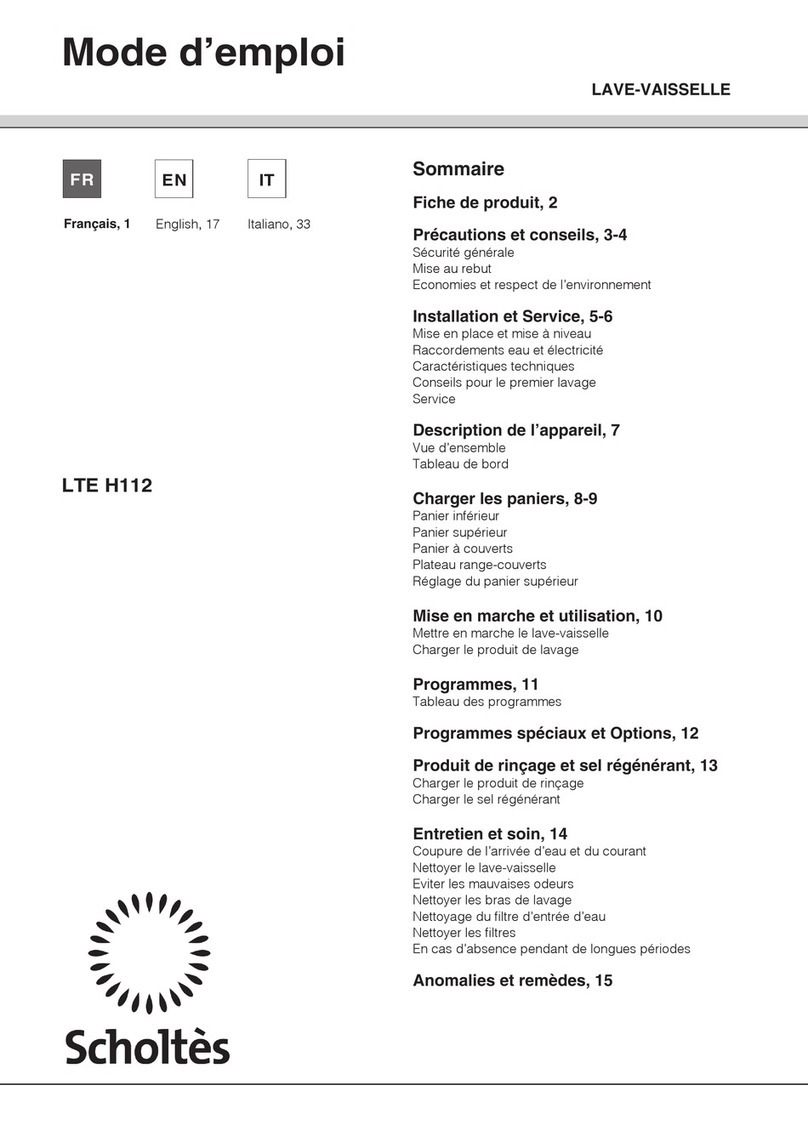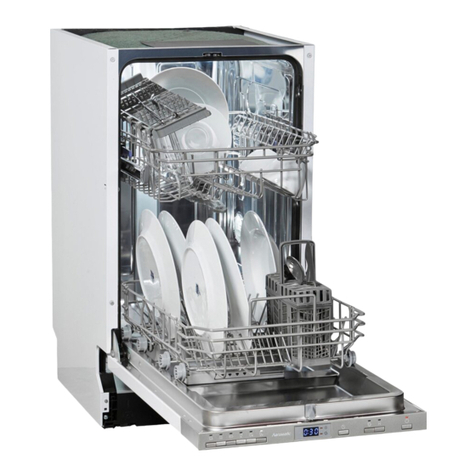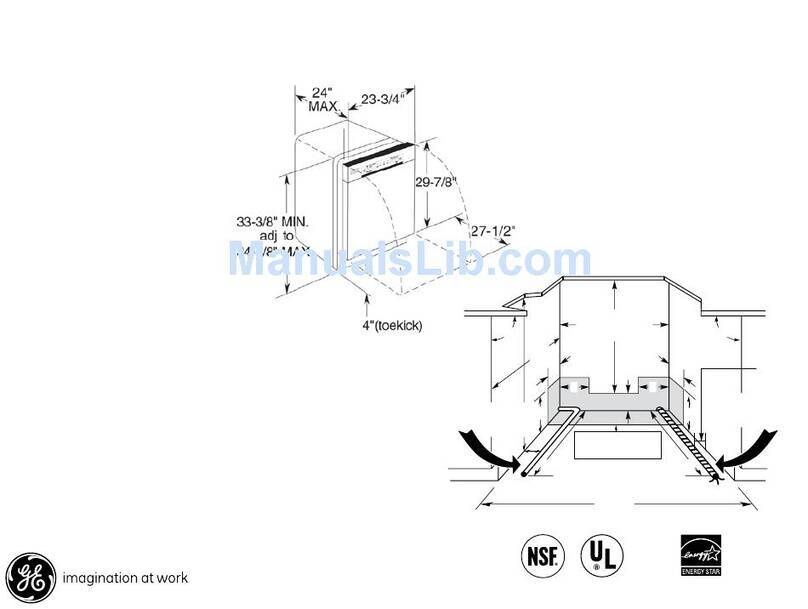
1
ENGLISH
CONTENTS
Getting familiar with your machine ..................................
Safety information and Recommendations . . . . . . . . . . . . . . . . . . . . . . . . . . . . 4
Installing the machine .............................................
Preparing the machine for use . . . . . . . . . . . . . . . . . . . . . . . . . . . . . . . . . . . . . .
Loading your dishwasher . . . . . . . . . . . . . . . . . . . . . . . . . . . . . . . . . . . . . . . . . . 1
Switching on the machine and selecting a programme . . . . . . . . . . . . . . . . . .
Maintenance and Cleaning . . . . . . . . . . . . . . . . . . . . . . . . . . . . . . . . . . . . . . . . .
Failure codes and what to do in case o ailure .................................
Practical and useful information . . . . . . . . . . . . . . . . . . . . . . . . . . . . . . . . . . . .
•Technical specifications . . . . . . . . . . . . . . . . . . . . . . . . . . . . . . . . . . . . . . . . . 3
•Conformity with the standards and Test data . . . . . . . . . . . . . . . . . . . . . . . . . 3
•Recycling .................................................... 4
•Safety information . . . . . . . . . . . . . . . . . . . . . . . . . . . . . . . . . . . . . . . . . . . . . . 4
•Recommendations . . . . . . . . . . . . . . . . . . . . . . . . . . . . . . . . . . . . . . . . . . . . . 7
•Items not suitable for dishwashing . . . . . . . . . . . . . . . . . . . . . . . . . . . . . . . . . 8
•Positioning the machine . . . . . . . . . . . . . . . . . . . . . . . . . . . . . . . . . . . . . . . . .
•Water connections . . . . . . . . . . . . . . . . . . . . . . . . . . . . . . . . . . . . . . . . . . . . . 9
•Water inlet hose . . . . . . . . . . . . . . . . . . . . . . . . . . . . . . . . . . . . . . . . . . . . . . . 10
•Water outlet hose . . . . . . . . . . . . . . . . . . . . . . . . . . . . . . . . . . . . . . . . . . . . . . 1 1
•Electrical connection . . . . . . . . . . . . . . . . . . . . . . . . . . . . . . . . . . . . . . . . . . . . 12
•Prior to using the machine . . . . . . . . . . . . . . . . . . . . . . . . . . . . . . . . . . . . . . . 13
•The importance of water decalcification . . . . . . . . . . . . . . . . . . . . . . . . . . . . .
•Filling with salt . . . . . . . . . . . . . . . . . . . . . . . . . . . . . . . . . . . . . . . . . . . . . . . . .
•Testing strip . . . . . . . . . . . . . . . . . . . . . . . . . . . . . . . . . . . . . . . . . . . . . . . . . . . 14
•Adjusting salt consumption . . . . . . . . . . . . . . . . . . . . . . . . . . . . . . . . . . . . . . . 14
•Detergent usage . . . . . . . . . . . . . . . . . . . . . . . . . . . . . . . . . . . . . . . . . . . . . . . 16
•Filling the detergent compartment . . . . . . . . . . . . . . . . . . . . . . . . . . . . . . . . . 16
•Combined detergent . . . . . . . . . . . . . . . . . . . . . . . . . . . . . . . . . . . . . . . . . . . . 16
•Filling with rinse aid and making the setting . . . . . . . . . . . . . . . . . . . . . . . . . . 17
•TopBasket ...................................................18
•LowerBasket .................................................19
•Alternative basket loads . . . . . . . . . . . . . . . . . . . . . . . . . . . . . . . . . . . . . . . . . 19
•Programme items . . . . . . . . . . . . . . . . . . . . . . . . . . . . . . . . . . . . . . . . . . . . . . 21
•Switching on the machine . . . . . . . . . . . . . . . . . . . . . . . . . . . . . . . . . . . . . . . .
•Programme follow-up . . . . . . . . . . . . . . . . . . . . . . . . . . . . . . . . . . . . . . . . . . .
•Changing a programme . . . . . . . . . . . . . . . . . . . . . . . . . . . . . . . . . . . . . . . . .
•Changing a programme with resetting . . . . . . . . . . . . . . . . . . . . . . . . . . . . . . 24
•Switching the machine off . . . . . . . . . . . . . . . . . . . . . . . . . . . . . . . . . . . . . . . . 24
•Filters . . . . . . . . . . . . . . . . . . . . . . . . . . . . . . . . . . . . . . . . . . . . . . . . . . . . . . .
•Sprayarms ...................................................
•Hose filter . . . . . . . . . . . . . . . . . . . . . . . . . . . . . . . . . . . . . . . . . . . . . . . . . . . .
8
8
13
13
13
8
22
23
23
23
23
25
25
26
26
29
27




















